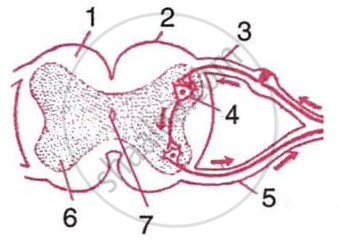Advertisements
Advertisements
Question
State whether the following is simple reflex, conditioned reflex or neither of the two.
Lifting up a book
Options
simple reflex
conditioned reflex
None of the above
Solution
None of the above
APPEARS IN
RELATED QUESTIONS
How are involuntary actions and reflex actions different from each other?
Give three examples of reflex actions.
Name the function of cerebrum.
Which of the following statements is correct about receptors?
A cylindrical structure P in our body begins in continuation with medulla and extends downwards. It is enclosed in a bony cage Q and surrounded by membranes R. As many as x pairs of nerves arise from the structure P. The structure P is involved in the reflex actions of our body and conduction of nerve impulses to and from another organ S of our body with which it forms CNS.
(a) Name the structure P.
(b) Name (i) bony cage Q, and (ii) membranes R.
(c) How much is x?
(d) Name the organs S.
(e) What are the reflexes involving structure P only known as?
Put a tick mark (✓) against the correct alternative in the following statement:
The smell of good food causes watering of your mouth. It is a
State whether the following is
Constriction of pupil
Which of the following is not an involuntary action?
Given alongside is a partial diagrammatic representation of a certain phenomenon pertaining to the nervous system.
 |
- Name the parts numbered 1-7.
- Name the phenomenon that the diagram depicts and define it.
- Give the technical term for the point of contact between two nerve cells.
- Name the parts not shown in the diagram that should be included to complete the pathway of the phenomenon.
The diagram given below shows the internal structure of a spinal cord depicting a phenomenon. Study the diagram and answer the following questions.
 |
- Name the phenomenon shown in the figure and define the same.
- Identify the parts labelled as 1 and 2. Write one functional difference between these two.
- Name the bony protective covering and the membranous protective covering of the spinal cord.
- Label the guidelines 3 and 4.
- How is the labelled part 3 different from part 4 with respect to its composition (part of neuron)?
- Give the technical term for the point of contact between the two nerve cells.
- Name the fluid filled inside the central canal of spinal cord.
- Name the term used for a small gap between two neurons.
- Give one example of a neurotransmitter.
- Draw a neat diagram of a nerve cell and label the parts: Perikaryon, Node of Ranvier, Myelin sheath and Axon terminals.
